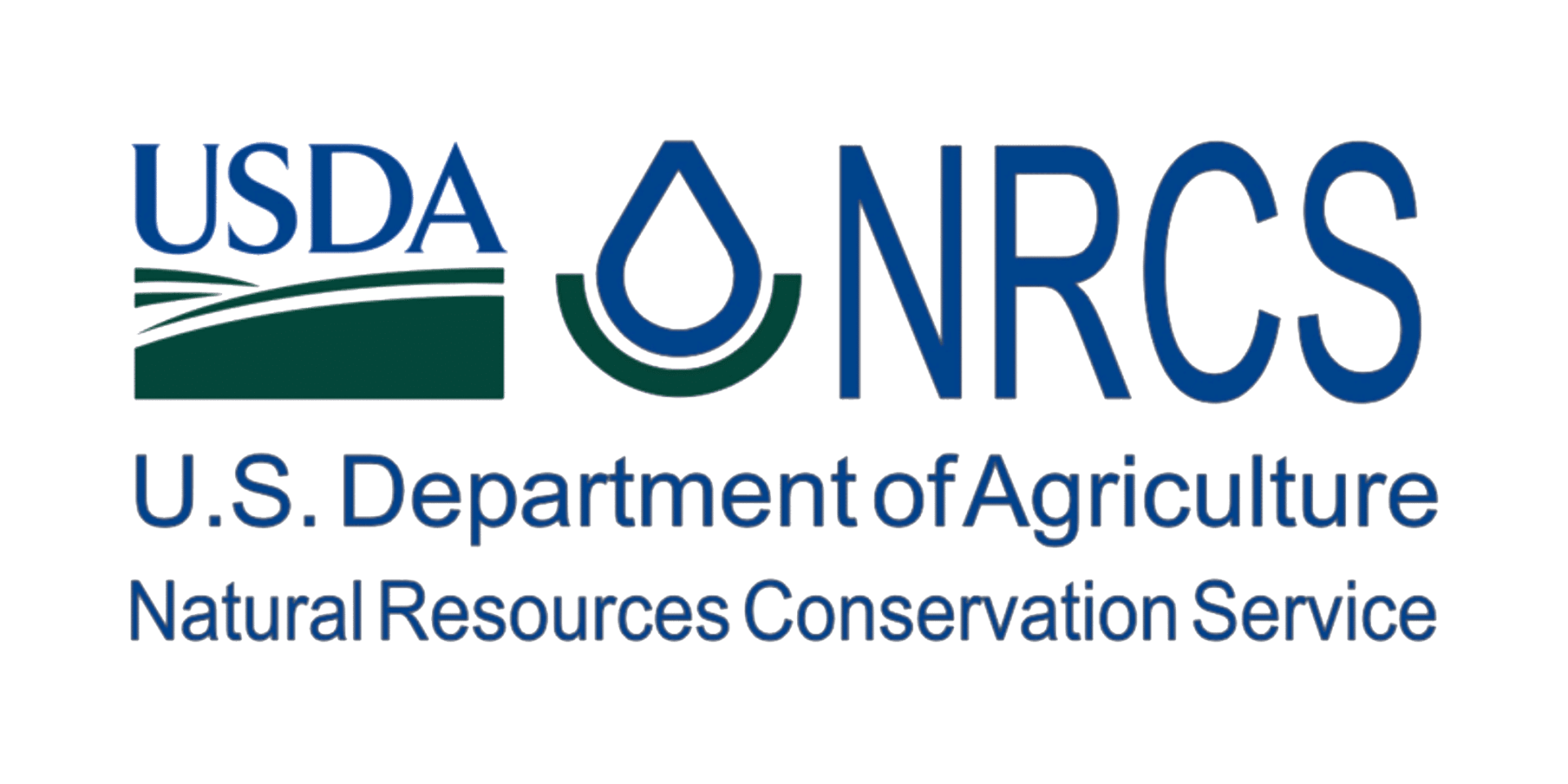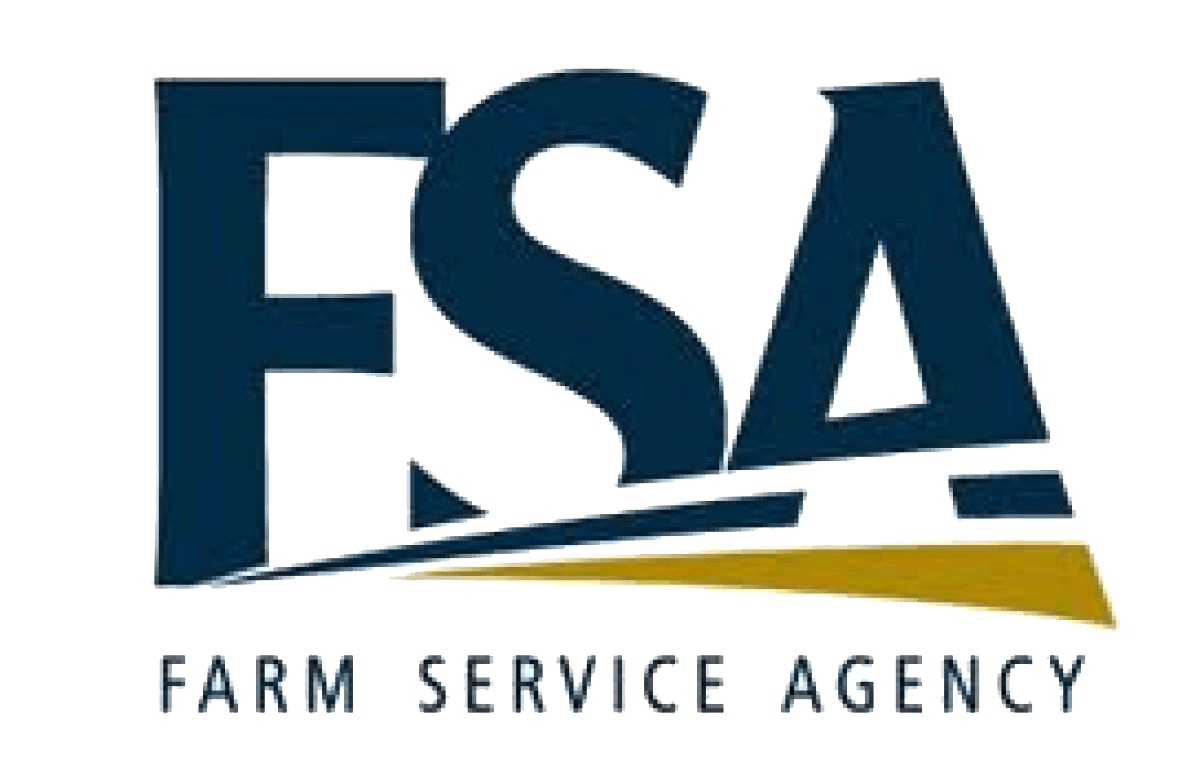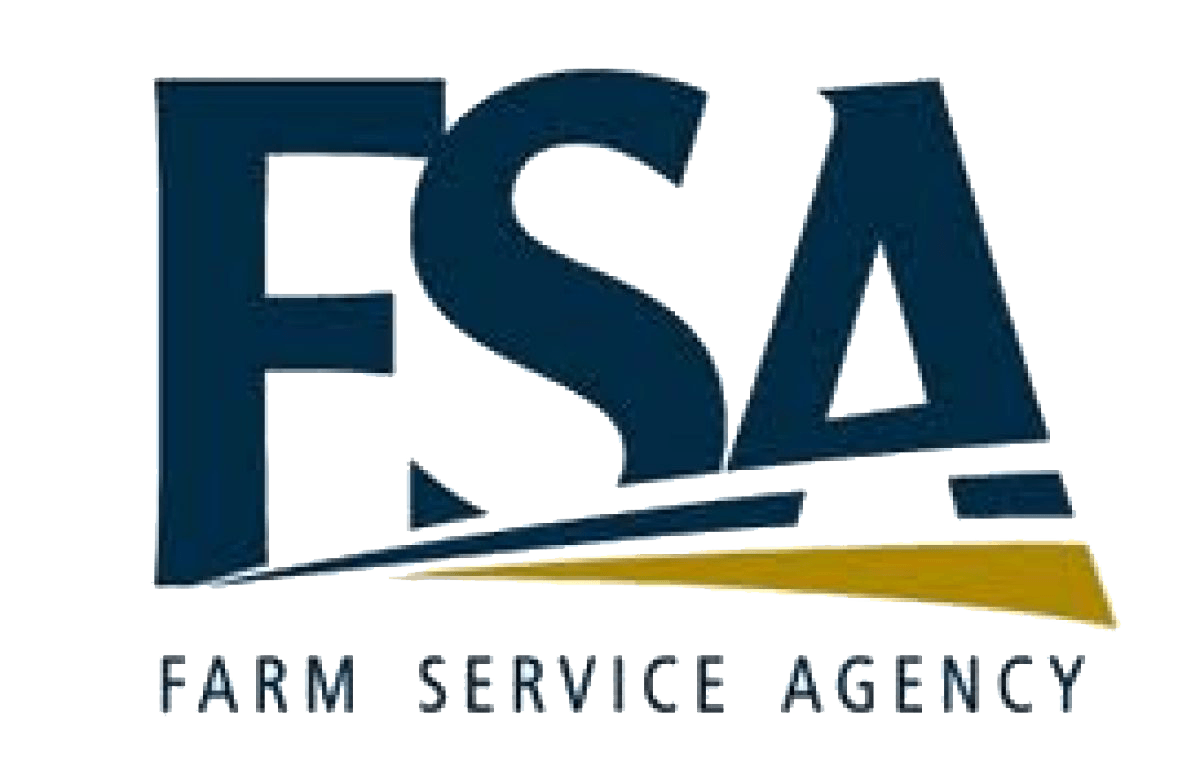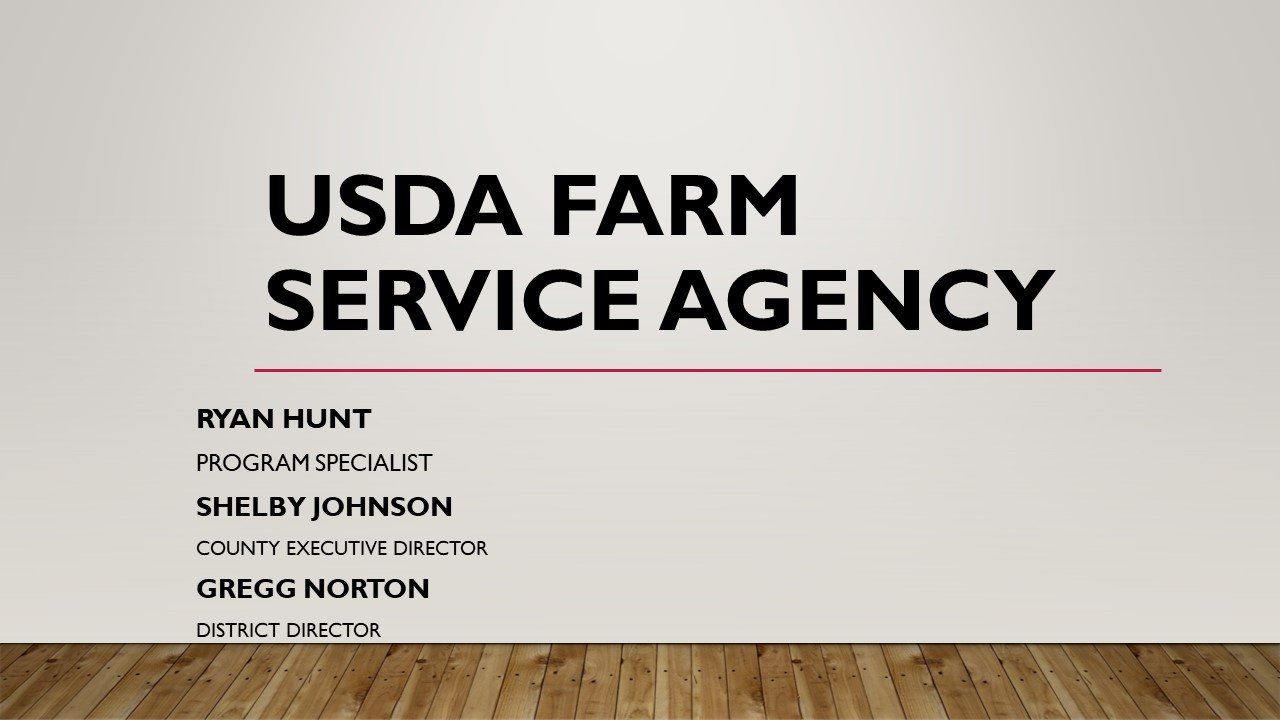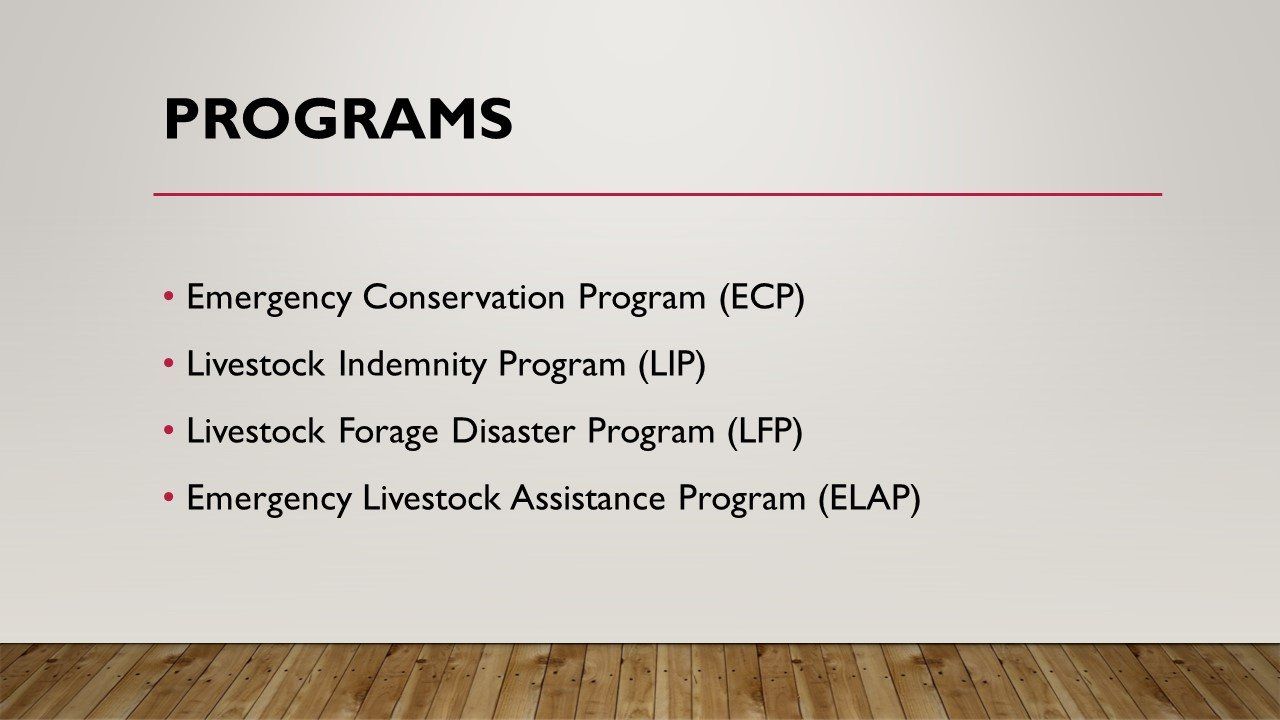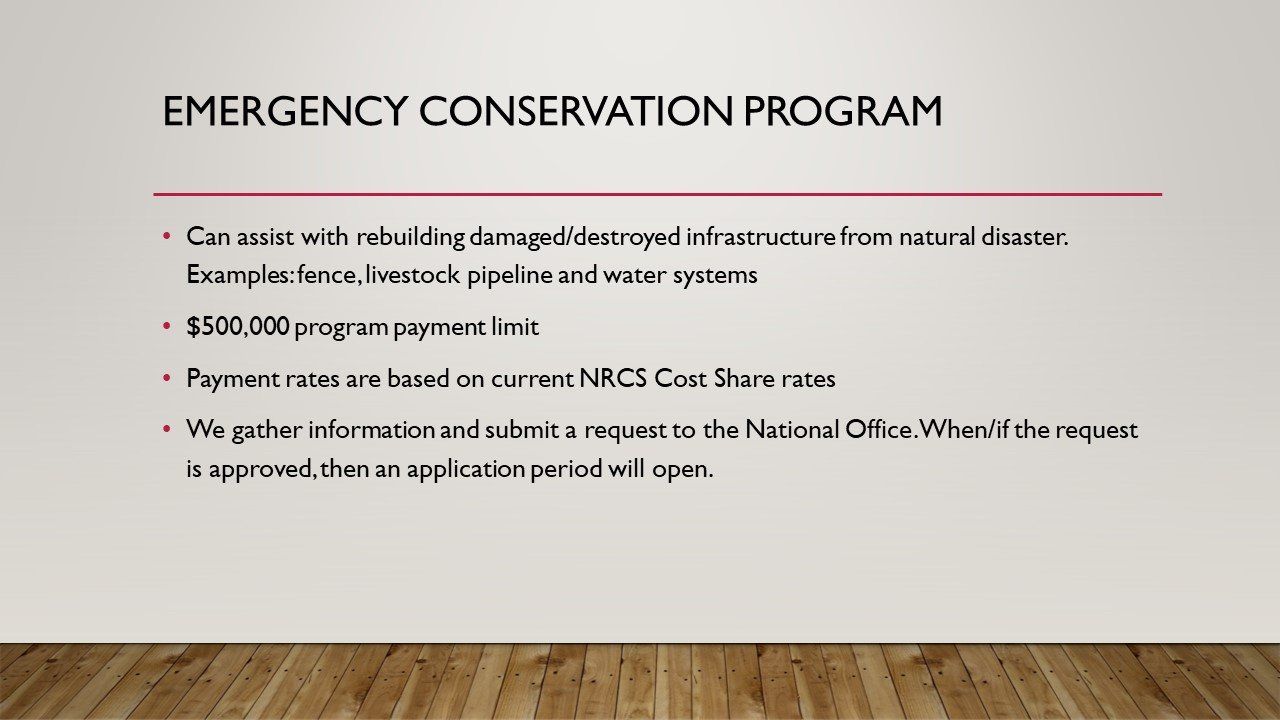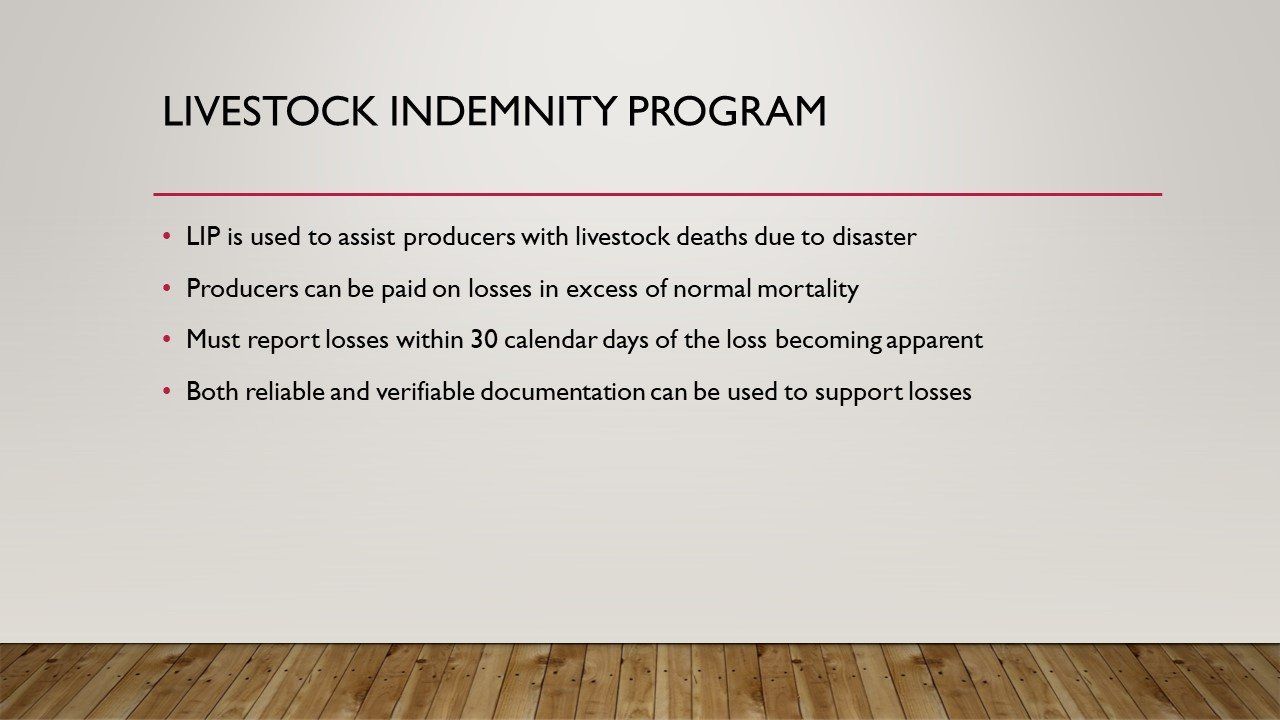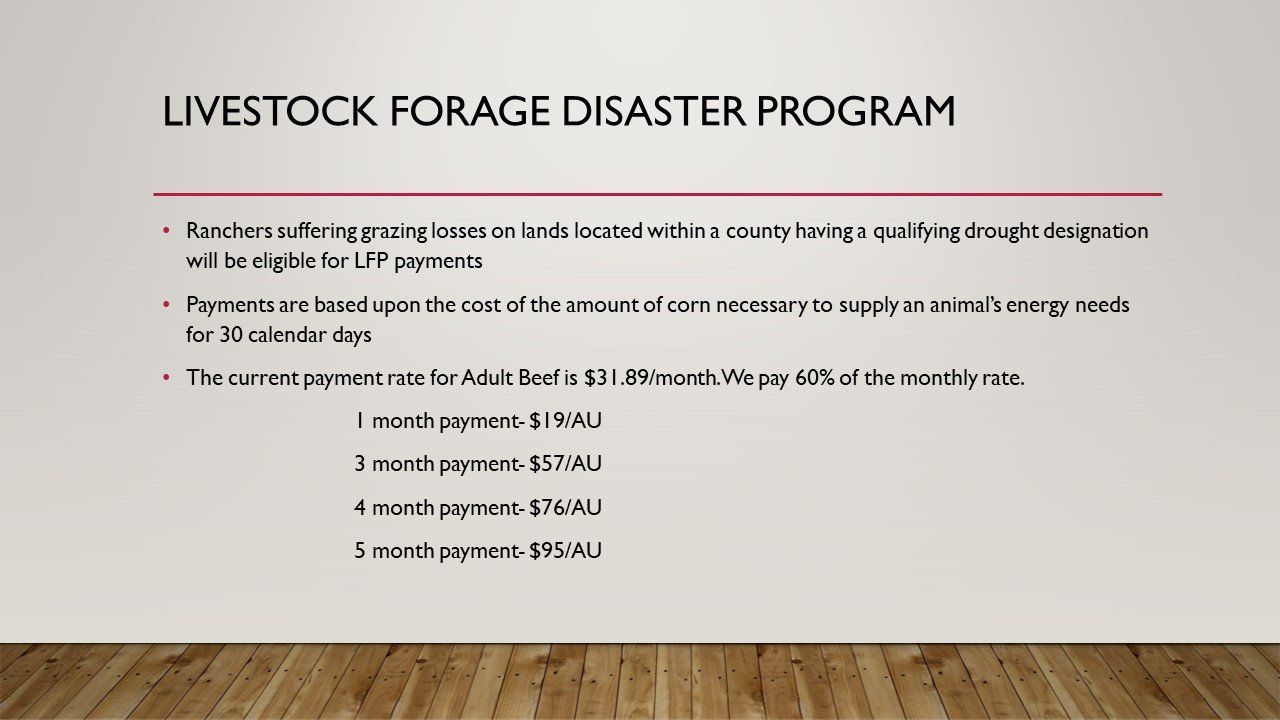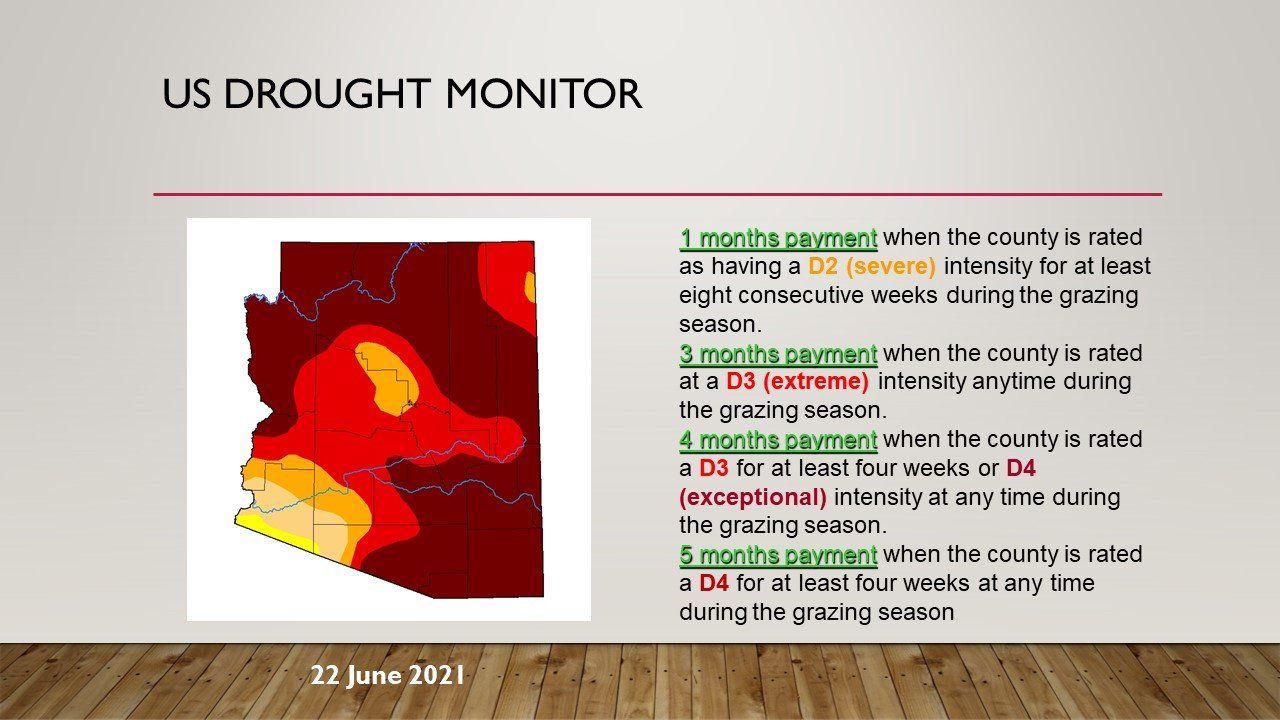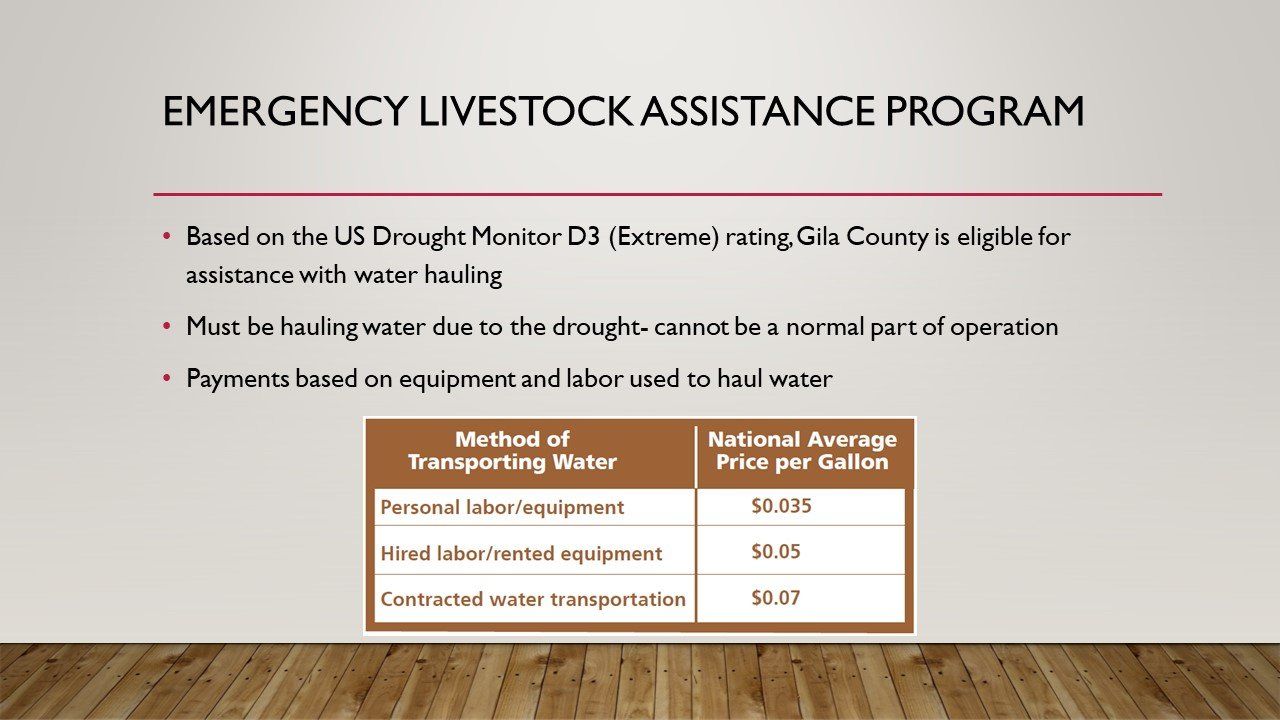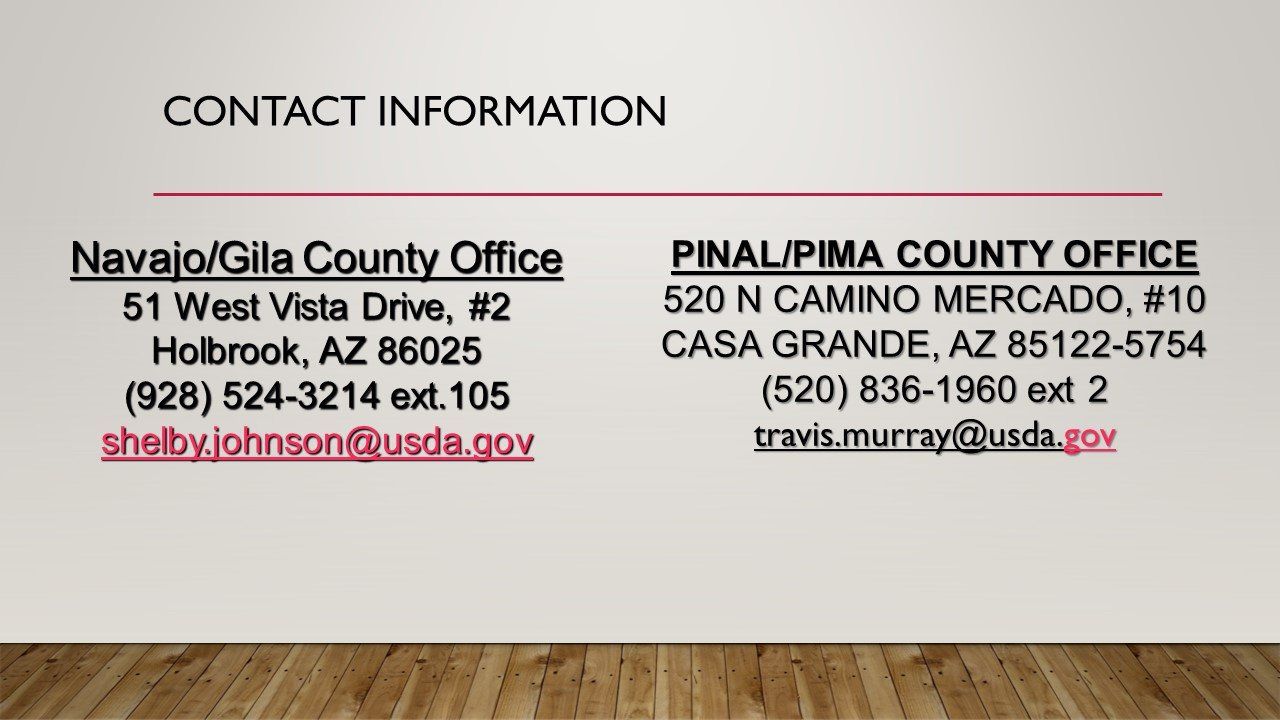$15,000 REWARD For Information leading to the arrest and/or conviction of person(s) responsible for killing 5 head of cattle on the ROCKING 4 RANCH, Gila County Az on or around March 3, 2025. For more Information, click here.
Disaster Recovery Assistance Resources
Application Deadline for FY2024: February 2, 2024
USDA’s Natural Resources Conservation Service offers voluntary Farm Bill programs that benefit both agricultural producers and the environment.
Assistance Programs for Producers include:
- Environmental Quality Incentives Program (EQIP) in Arizona
- Conservation Stewardship Program (CSP) in Arizona
- Regional Conservation Partnership Program (RCPP) in Arizona
Application deadline for Fiscal Year 2024 is February 2, 2024.
Your local field office is the absolute best resource for information so be sure to check with them if you have any questions.
NRCS Field Offices Serving Gila County Ranchers
Chandler Field Office: Serves: East Maricopa, Gila River and Tonto NRCDs
Tucson Field Office: Serves: Pima, Winkelman and Santa Cruz NRCD
San Carlos Field Office: Serves: San Carlos Apache NRCD
Farm Services Agency
Disaster Assistance Programs
The Agricultural Act of 2014 indefinitely extended the following disaster programs that were previously authorized by the 2008 Farm Bill. The programs are made retroactive to Oct. 1, 2011.
To be eligible for disaster assistance programs under the 2014 Farm Bill, producers are no longer required to purchase crop insurance or NAP coverage, which was the risk management purchase mandate under the 2008 Farm Bill.
- Noninsured Crop Disaster Assistance Program (NAP)
- Livestock Forage Program (LFP)
- Livestock Indemnity Program (LIP)
- Emergency Assistance for Livestock, Honeybees, and Farm-Raised Fish (ELAP)
- Emergency Conservation Program (ECP)
Gila County Service Center
Steven Yazzie
Farm Service Agency
Navajo/Gila County FSA Office
51 W Vista Dr, Suite 2
Holbrook, AZ 86025
Phone: (928) 524-3214 X105
EMail: steven.yazzie@usda.gov
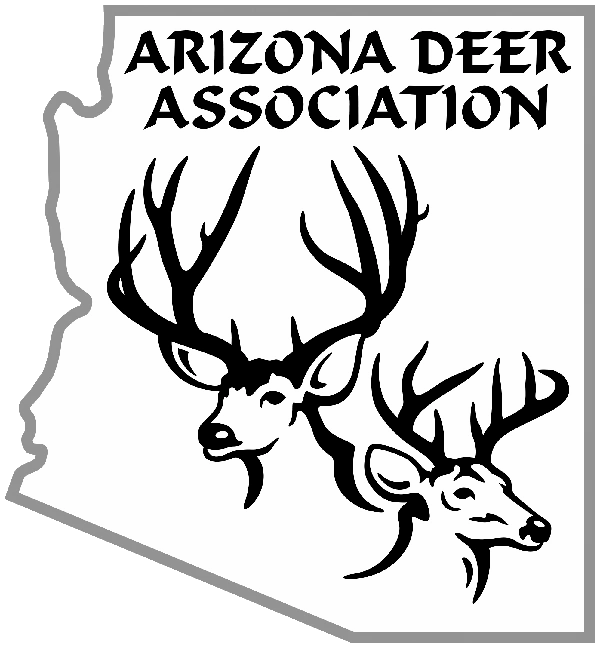
Arizona Deer Association
Here to help those ranchers affected by wildfires.
Arizona Deer Association is here to help those ranchers affected by the wildfires.
There are several ways we can help, surveying infrastructure damage, volunteer labor to replace pipelines, working directly with USFS, storage, solar, funding and material sources.
AZGFD's Landowner Relations Program (LRP) fiscal year starts July 1 and will receive a new round of funding. I had a positive meeting with Jake Jaeger the program director, regarding ranchers affected by the fires. LRP will be another great avenue for funding infrastructure damage.
Our goal is to get waters back up and running as soon as possible.
Contact
Jim Lawrence
Arizona Deer Association
Phone: (623) 764-0249
EMail: jim@azdeer.org
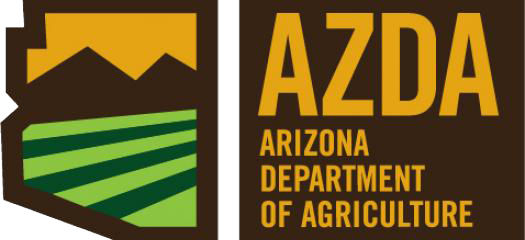
December 29, 2023 - Final Deadline Submission for Applications for the Livestock Operator Fire and Flood Assistance Program(LOFFAP)
Applicants are required to submit their application package through the online platform HERE. For further details, please reach out to Ashley Estes, Program Coordinator, via email at aestes@azda.gov or by phone at (602) 316-6775. You may also contact Marty Suter, Program Coordinator, at msuter@azda.gov or (602) 396-8365.
List of Services
-
Noninsured Crop Disaster Assistance Program (NAP) Fact Sheet PDF
The Noninsured Crop Disaster Assistance Program (NAP) administered by the U.S. Department of Agriculture (USDA) Farm Service Agency (FSA), provides financial assistance to producers of non-insurable crops to protect against natural disasters that result in lower yields or crop losses, or prevents crop planting.
September 30th, 2024 is the deadline for the 2025 Noninsured Crop Disaster Assistance Program (NAP). Contact Steven Yazzie, FSA, for details. EMail: steven.yazzie@usda.gov
-
Livestock Forage Program (LFP) Fact Sheet PDFList Item 2
LFP Provides assistance to eligible livestock owners and contract growers who have covered livestock and who are also producers of grazed forage crop acreage (native and improved pastureland with permanent vegetive cover that have suffered a loss of grazed forage due to a qualifying drought during the normal grazing period for the county.
How to apply- Producers can apply to receive LFP assistance at local FSA Service Centers. The LFP application period ends 30 calendar days after the end of the calendar year in which the grazing loss occurred.
Livestock owners or contract growers need to fillout and sign form CCC-941 - Adjusted Gross Income Certification Consent (AGI's). If signing up under an entity, the appplicant(s) will need to fill out one AGI for the entity and one AGI for each individual menber of the entity.
-
Livestock Indemnity Program (LIP) Fact Sheet PDFList Item 3
LIP Provides assistance to eligible livestock owners or contract growers for livestock deaths in excess of normal mortality caused by an eligible adverse weather event, eligible disease, and attacked by animals reintroduced into the wild by the federal government or protected by law, including wolves and avian predators. In addition, LIP provides assistance to eligible livestock owners that must sell livestock at a reduced price because of an injury from an eligible loss condition.
How to apply- Producers can apply to receive LIP assistance at local FSA Service Centers. Please file a notice of loss within 30 days after the loss is apparent. The LIP application period ends 60 days after the calendar year in which the eligible loss condition occurred.
-
Emergency Assistance for Livestock, Honeybees, and Farm-Raised Fish (ELAP) - Livestock Assistance Fact Sheet PDFList Item 1
ELAP Provides assistance for the following: Livestock Feed and grazing losses that are not due to drought or wildfires on federally managed lands; Losses resulting from the additional cost of transporting feed and/or water to livestock due to an eligible drought. Losses resulting from the additional cost associated with gathering livestock for treatment and inspection related to cattle tick fever. *Drought and wildfire on federally managed land are not eligible adverse weather or loss conditions for livestock grazing losses under ELAP. These conditions are covered by the Livestock Forage Program (LFP).
How to apply-Producers can apply to receive ELAP assistance at local FSA Service Centers. Please file a notice of loss within 30 days after the loss is apparent. The ELAP application period closes December 31 of each calendar year.
-
Emergency Conservation Program (ECP) Fact Sheet
ECP helps farmers and ranchers to repair damage to farmlands caused by natural disasters and to help put in place methods for water conservation during severe drought.
The ECP does this by giving ranchers and farmers funding and assistance to repair the damaged farmland or to install methods for water conservation.
Individual FSA Drought Relief Forms
- AD-2047-New Applicant Data Worksheet Request-Fill Out on Computer
- AD-2047-New Applicant Data Worksheet Request-Instructions
- CCC-853-Livestock Forage Disaster Application-Fill Out on Computer
- CCC-853-Livestock Forage Disaster Application-Instructions
- CCC-860-Socially Disadvantaged, Limited Resources, Beginning and Veteran Farmer or Rancher Certification-Fill Out on Computer
- CCC-941-Adjusted Gross Income Certification Consent To Disclose Tax Information-Print Only
- CCC-941-Adjusted Gross Income Certification Consent To Disclose Tax Information-Instructions
- SF-3881-FSA-Direct Deposit Form-Print Only
- SF-3881-FSA-Direct Deposit Form-Fill Out on Computer
- SF-3881-FSA-Direct Deposit Form-Instructions
NRCS Field Offices Serving Gila County Ranchers
-
CHANDLER FIELD OFFICEList Item 1
805 East Warner Road, #104
Chandler, AZ 85225
Phone: (480) 988-1078
Fax: (855) 848-4340
Serves: East Maricopa, Gila River and Tonto NRCDs
Phillip F. Jacquez
District Conservationist
Phone: 480-270-8795
EMail: Phillip.Jacquez@usda.gov
Robert Wilson
State Resources Inventory Coordinator
Phone: 480-270-8797
EMail: Robert.Wilson@usda.gov
Xavier "Jerry" Hernandez
Soil Conservationist
Phone: 480-270-8798
Email: Xavier.Hernandez@usda.gov
Paul Cattelino
Natural Resource Specialist
Phone: 480-988-1078
Email: Paul.Cattelino@usda.gov
-
TUCSON FIELD OFFICEList Item 2
3241 North Romero Road
Tucson, AZ 85705
Phone: (520) 292-2999
Fax: (855) 848-4340
Serves: Pima, Winkelman and Santa Cruz NRCD
Alisha Phipps
Acting District Conservationist
Phone: 520-989-5630
Email: Alisha.Phipps@usda.gov
Brett Myers
Rangeland Management Specialist
Phone: 520-989-5629
Email: Brett.Myers@usda.gov
Alvaro Campos
Soil Conservationist
Phone: 520-898-5627
Email: Alvaro.Campos@usda.gov
-
SAN CARLOS FIELD OFFICEList Item 3
P.O. Box 729
Peridot, AZ 85542
Phone: (928) 475-2692
Fax: (855) 848-4340
Serves: San Carlos Apache NRCD
Millie Titla
District Conservationist
Phone: 928-475-2692
EMail: Millie.Titla@usda.gov
Environmental Quality Incentives Program (EQIP) Assistance for Producers
EQIP Application Process
The Environmental Quality Incentives Program (EQIP) can help agricultural producers with technical and financial assistance to producers to address natural
resource concerns and deliver environmental benefits.
Type of Work Authorized
- Improved water and air quality
- Conserved ground and surface water
- Increased soil health and reduced soil erosion and sedimentation
- Improved or created wildlife habitat
- Mitigation against drought and increasing weather volatility.
Eligibility
Farmers, ranchers, and forest landowners who own or rent agricultural land are eligible. EQIP assistance can be used on all types of agricultural operations, including:
• Conventional and organic
• Specialty crops and commodity crops
• Forestry and wildlife
• Historically underserved farmers*
• Livestock operations
*Increased and advance payments available for historically underserved producers
(beginning, limited resource, socially disadvantaged, and military veterans.)
Application Information and Documents* -*Additional documents may be required
1. NRCS-CPA-1200 Conservation Program Application Form
2. With your application, please provide a written description of the damage to the conservation practice(s). To the best of your ability, this should include:
- Description of the conservation practice
- Approximate location
- Approximate installation date
- Approximate date of the incident that caused the damage
- Cause of the damage
- Description of the damage
- Picture of the damage
Possible alternatives to the written statement may be an insurance adjuster’s report, an insurance claim, or any other report or document that provides information about the damage to the conservation practice.
Application Deadline: February 2, 2024
Conservation Incentive Contracts (EQIP-CIC)
The new Conservation Incentive Contracts (EQIP-CIC) component of EQIP helps producers mitigate the immediate impacts of drought, while expanding on those conservation efforts to develop long term resiliency to drought and wildfire.
Type of Work Authorized
EQIP-CIC addresses high priority conservation and natural resource concerns such as drought and wildfire suppression.
Similar to the classic EQIP, agricultural producers address identified resource concerns through conservation activities including, but not limited to:
- Forest stand improvement
- Critical area planting
- Fuel breaks
Additionally, the new component also includes a stewardship requirement to build on existing conservation efforts that may include, but are not limited to:
- Reducing forest density
- Biochar production
- Creating structural diversity
Eligibility
Agricultural producers and Tribes who manage timber forest lands and are interested in long-term conservation solutions may be eligible.
Application Information and Documents* *Additional documents may be required
- NRCS-CPA-1200 Conservation Program Application Form
- FY2021 Arizona EQIP Conservation Incentive Contract Priority Areas Map (pdf)
- FY2021 Arizona EQIP Conservation Incentive Contract Payment Schedule
Application Deadline: February 2, 2024
Assistance for Producers: How to Apply
Producers interested in applying for the Environmental Quality Incentives Program (EQIP) Reapplication of Destroyed Practices or the Conservation Incentive Contracts (EQIP-CIC) can contact their local office to apply.
For your added convenience, you may apply through one of the options below:
OPTION 1:
The quickest and easiest way to apply is to log into your Farmers.gov account where you can Start a New Request on the Conservation Assistance Request page.
Don't have a Farmers.gov account yet? You can Create a New Account here.
OPTION 2:
Download the NRCS-CPA-1200 Conservation Program Application Form here. The form can be completed electronically or by printing and filling it out by hand.
There are a couple ways you can submit your NRCS-CPA-1200 Conservation Application Form to NRCS in Arizona.
- Once you have completed and signed the form, you can contact your local NRCS office to make arrangements to submit your application.
OPTION 3:
Contact your local NRCS office to schedule an appointment or make other arrangements to submit your application.
Environmental Quality Incentives Program (EQIP) Assistance for Communities
Additional NRCS programs include the Emergency Watershed Protection (EWP) program, which provides assistance to local government sponsors with the cost of addressing watershed impairments or hazards such as damaged upland sites stripped of vegetation by wildfire, debris removal and streambank stabilization.
Eligible sponsors include cities, counties, towns, or any federally recognized Native American tribe or tribal organization.
Sponsors must submit a formal request (via mail or email) to the state conservationist for assistance within 60 days of the natural disaster occurrence or 60 days from the date when access to the sites become available. For more information, visit the NRCS Disaster Assistance in Arizona page or contact your local NRCS office.
“EWP provides immediate assistance to communities to mitigate potential hazards to life and property resulting from the fires and particularly the severe erosion and flooding that can occur after the fire,” Tatem said. “We can work with a local sponsor to help a damaged watershed so that lives and property are protected while preventing further devastation in the community.”
In addition to EWP, Conservation Technical Assistance (CTA) is another valuable service that NRCS can provide following a wildfire. NRCS technical assistance can help fire victims with planning cost-effective post fire restoration practices.

